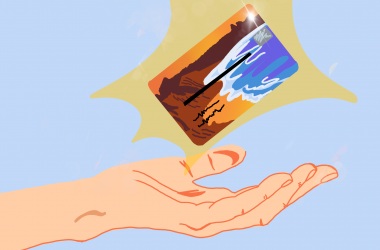It was July 25 and I was flying into Tehran, Iran from Dushanbe, Tajikistan. I had left for Tehran the day after my study abroad program ended. It had been six weeks since millions voted in Iran’s 10th presidential election.
I wanted to smell the environment of a country whose opposition protesters were seemingly being cheered on by the entire globe due to the power of the Internet.
That week, oppositional candidate Mir Hossein Mousavi called for an official day of mourning to commemorate the death of Neda-Agha Soltan. Neda was the music student whose face became the worldwide symbol of the Iranian revolt after she was shot to death during a protest.
The authorities declined his request. Nevertheless, Neda’s family that week was holding a burial ceremony for her at Behest Zahra cemetery, the biggest cemetery in Iran.
Shi’ite Muslims mourn their dead on the third, seventh and 40th days after a death, and these deaths are a pivotal part of Iran’s rich history. Patterns of confrontations between the Shah’s security forces and revolutionaries were critical in 1979. Neda’s 40th day of remembrance would surely quench my curiosity as well as my thirst for avant-garde activities.
My cousin and I took the metro to the cemetery. Random people on the metro became familiar with each other through head nods and eye contact; everyone was “privately” headed to the cemetery.
We exited the metro only to be greeted by dozens of police officers with expressionless, stern looking faces surveying the crowd. The sun scorched the cemetery as we walked aimlessly for Neda’s plot.
When we arrived we stumbled upon a group of paramilitary Basij members who were revving their motorcycle engines and waving their batons.
I would learn just how those batons feel a few days later.
One Basij member in particular stared at me as I walked past. His eyes were fixed on me and his stare expressed a legitimate right to inflict pain upon me. I quickly realized the gravity of the situation as my cousin led me on a detour in order to stay out of the hungry wolf’s way.
“Death to the Dictator,” thousands would shout; the dictator being either the supreme leader of Iran, Ayatollah Ali Khameini, or President Mahmoud Ahmadinejad. “Death to Russia!” and “Death to China!” chants were also audible.
“Why should we say death to America? The United States has not been here for 30 years. Russia has been helping the status quo,” explained my cousin as we walk by a ripped up Russian flag being held by two protesters.
“Mojtaba, you will die before you become supreme leader!” was another epithet shouted. Mojtaba is the second son of the current supreme leader and is rumored to be in line to eventually succeed his father.
This group of upset voters had turned into a movement that consisted of men and women, young and old, secular and religious, and even included small children.
I walked with the procession for hours until my cousin explained it was time to go, which meant the “Storm Troopers” were about to pounce.
On cue, tear gas filled the air as riot police in full gear started to charge the mass of people. We retreated as people screamed in distress behind us. I felt ashamed to leave as I watched the Basij and revolutionary guards disperse.
“We still have to go to Melody’s party tonight,” my cousin reminded me as we walked backed to the metro. The 45-minute metro ride back was filled with the same dissident chants. Ahmadinejad supporters shrank in silence as they waited for their stop.
We exited the metro with hundreds of people still chanting through the subway terminal. We walked the opposite way. We had a party to attend. It was dark now. An hour later I was at a house party in western Tehran. The flat was filled with young people smiling and dancing.
I had just left an event in a Tehran cemetery that questioned the establishment of the Islamic Republic and was now in what resembled a home in Los Angeles — or “Tehrangeles.”
This was not a dream. This is Iran.
Read the follow-up to this story .
Hanif Zarrabi is a Middle Eastern history graduate student and a columnist for the Daily 49er.



